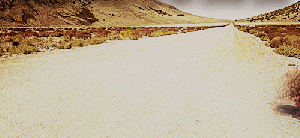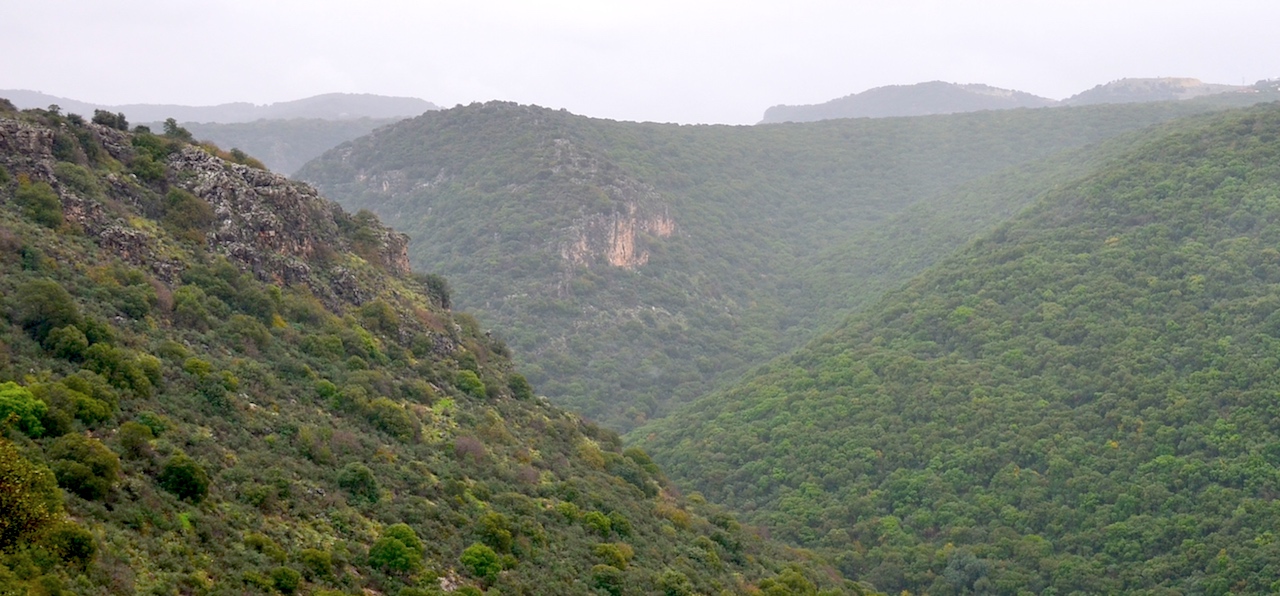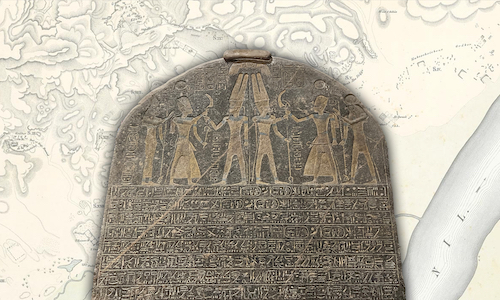Joshua 10 and 11: A Closer Look
In the previous post we saw that as well as being flatly contradicted by the archaeological evidence the Southern and Northern Campaigns of Joshua 10 and 11 don’t line up with the rest of the conquest accounts in Joshua, Judges, and Samuel.
We concluded that before trying to understand how the archaeological evidence fits with the text, we first need to understand why the texts don’t fit each other. Let’s start by looking at the text of these two chapters since they’re contradicted by almost all other related passages.
Repetitive language
One of the first clues that we’re not dealing with a straight record of a historical event is the amount of repetition in these chapters. Here are some examples:
| Phrase | Passages | Count |
|---|---|---|
| “utterly destroyed” | Jos 10:1, 10:28, 10:35, 10:37, 10:39, 10:40, 11:11, 11:12, 11:20, 11:21 | 10 |
| “with the edge of the sword” | Jos 10:28, 10:30, 10:32, 10:35, 10:37, 10:39, 11:12, 11:14 | 8 |
| “left no survivors/no one remaining” | Jos 10:28, 10:30, 10:33, 10:37, 10:39, 10:40, 11:8 | 7 |
| “just as he had done to” | Jos 10:1, 10:28, 10:30, 10:32, 10:35, 10:37, 10:39 (x2) | 8 |
This level of repetition tells us that we’re not reading an ordinary record of events – it’s not prose; it’s too stylised.
Language of Annihilation
The summary at the end of each campaign narrative tells us that the Canaanites were completely annihilated:
Jos 10:40 So Joshua defeated the whole land, the hill country and the Negeb and the lowland and the slopes, and all their kings; he left no one remaining, but utterly destroyed all that breathed, as the LORD God of Israel commanded.1
Jos 11:14 All the spoil of these towns, and the livestock, the Israelites took for their booty; but all the people they struck down with the edge of the sword, until they had destroyed them, and they did not leave any who breathed.
Similar language is found throughout the two campaign accounts (Jos 10:28, 10:30, 10:33, 10:37, 10:39, 10:40, 11:8).
Taking these two summaries at face value, the only people we’d expect to be in Canaan at this point would be Israelites. No one had been left alive. The Canaanites had been 100% eradicated. Canaanite cities should have looked something like this:

Yet, as we’ve seen from other parts of Joshua, Judges, and Samuel, this plainly was not the case. These two chapters quite clearly contain exaggeration – hardly a feature of historical narratives – which leads us to our next point…
Hyperbole
One of the defining features of these two chapters is hyperbole, i.e. “deliberate exaggeration, not meant to be taken literally”2.
Who went with Joshua on the southern campaign? All the fighting force, all the mighty warriors (Jos 10:7). Who returned back to the camp? All Israel (Jos 10:15). Who did Joshua summon to the cave at Makkedah? All the Israelites (Jos 10:24). What happened to the people of Eglon? Every person was destroyed (Jos 10:35) – same goes for the rest of the towns. How much of the land did Joshua take on the Southern Campaign? The whole land (Jos 10:40). How quickly did Joshua take all these kings and their land? At one time (Jos 10:42).
How big an army did Joshua face on the Northern Campaign? A great army in number like the sand on the seashore (Jos 11:4). How many of this vast army survived the battle with the Israelites? There were none remaining (Jos 11:8). How much did the Israelites take in spoil? All of it (Jos 11:14). How many of Moses’ commands did Joshua follow? All of them (Jos 11:15).
We could summarise the chapters like this: All Israel took the whole land at one time and killed every last Canaanite, and there wasn’t a single casualty amongst the Israelite army.
If this isn’t hyperbole I’m not sure what is. It hardly needs to be pointed out that this isn’t how historical narratives are written.
Common narrative structure
The setup of the two campaigns could hardly have been more different. The Israelites were fighting different enemies, on different terrain, the battles instigated for different reasons. And yet, the two chapters follow an almost identical structure.
| Event | Southern Campaign (ch 10) | Northern Campaign (ch 11) |
|---|---|---|
| Israel’s enemies organise battle | Jos 10:1-6 | Jos 11:1-5 |
| Joshua gathers his army | Jos 10:7 “all the fighting force with him, all the mighty warriors” | Jos 11:7 “with all his fighting force” |
| Divine assistance promised | Jos 10:8 “Do not fear them, for I have handed them over to you; not one of them shall stand before you.” | Jos 11:6 “Do not be afraid of them, for tomorrow at this time I will hand over all of them, slain, to Israel” |
| Joshua’s surprise attack | Jos 10:9 “So Joshua came upon them suddenly” | Jos 11:7 “So Joshua came suddenly upon them” |
| Yahweh/Joshua defeats his enemies | Jos 10:10 “And the LORD threw them into a panic before Israel, who inflicted a great slaughter on them at Gibeon” | Jos 11:8 “And the LORD handed them over to Israel, who attacked them” |
| Enemies flee and are pursued | Jos 10:10 “chased them by the way of the ascent of Beth-horon” | Jos 11:8 “and chased them as far as Great Sidon and Misrephoth-maim, and eastward as far as the valley of Mizpeh” |
| Enemies are wiped out | Jos 10:10 “struck them down as far as Azekah and Makkedah”; Jos 10:20 “When Joshua and the Israelites had finished inflicting a very great slaughter on them, until they were wiped out” | Jos 11:8 “They struck them down, until they had left no one remaining” |
| Joshua returns to enemy site | Jos 10:21 “all the people returned safe to Joshua in the camp at Makkedah” | Jos 11:10 “Joshua turned back at that time, and took Hazor” |
| Joshua wipes out enemy site | Jos 10:28 “Joshua took Makkedah on that day, and struck it and its king with the edge of the sword; he utterly destroyed every person in it; he left no one remaining.” | Jos 11:10-11 “took Hazor, and struck its king down with the sword. Before that time Hazor was the head of all those kingdoms. And they put to the sword all who were in it, utterly destroying them; there was no one left who breathed, and he burned Hazor with fire.” |
| Joshua wipes out enemy cities | Jos 10:29-39 | Jos 11:12-15 |
| Summary of land taken | Jos 10:40-41 | Jos 11:16-23 |
| Summary of conquest | Jos 10:42 “Joshua took all these kings and their land at one time, because the LORD God of Israel fought for Israel.”. | Jos 11:23 “So Joshua took the whole land, according to all that the LORD had spoken to Moses; and Joshua gave it for an inheritance to Israel according to their tribal allotments.” |
Obviously, there are differences between the campaigns. There’s the well known “Long Day” (Jos 10:11-14), and the less well known incident of the kings trapped in the cave at Makkedah (Jos 10:16-27) that only feature in chapter 10. There’s the focus on hamstringing horses and burning chariots (Jos 11:6, 9), and mention of the Anakim (11:21–22) that only appear in chapter 11. But what is abundantly clear is that the structure of these chapters is the same. The language within the structure is the same. The sequence of events is practically identical.
It looks very much like the chapters are following some formula that we’re not aware of. There’s a definite pattern. Again, this isn’t what we’d expect from ordinary history writing. We’d expect to be told what happened, not have the events shoehorned into a fixed pattern.
The focus on Joshua
Another unexpected feature of these chapters is the focus on the leader of the Israelite army: Joshua. Barring the first section of each chapter that explains who is plotting against the Israelites, Joshua is mentioned or alluded to in almost every verse.
Chapter 10 has 38 verses (Jos 10:6-43) and chapter 11 has 18 verses (Jos 11:6-23), excluding the introductory sections where Joshua is not relevant. That’s a total of 56 verses. Of those, the following are the only verses that don’t feature Joshua: 10:10, 10:11, 10:13, 10:16, and 11:8, 11:14, 11:19-20, 11:22. Joshua therefore appears in 84% of the verses that make up the record of the Southern and Northern Campaigns.

Once again, this is not an ordinary feature of a historical narrative. The focus isn’t on the cause of the conflict, it’s not on the Israelite army, it’s not on the enemy; it’s on Joshua.
This point is rammed home in the “Long Day” story. The event was described as being without parallel: “There has been no day like it before or since” (Jos 10:14). What was without parallel was not the “Long day”3; it’s that “the LORD heeded a human voice”. Whose voice? Joshua’s.
These narratives look like they’re designed to keep Joshua front and centre.
Summary
We’ve noted a few features of these chapters that we wouldn’t expect to find in a historical narrative:
- Repetitive language
- Language of annihilation
- Hyperbole
- Common narrative structure
- Absolute focus on the leader
They’re clear markers that we’re not reading historical narratives – we’re reading something else. And if that’s the case, that probably explains why these chapters don’t fit with the rest of the passages we looked at in the previous post.
So if Joshua 10 and 11 aren’t historical narratives, what are they? In the next post we’ll look outside scripture to learn more about the features we noted in this post, where they come from, and what that tells us about the historicity of the events these chapters appear to be documenting.
Featured image
Upper Galilee, in the area of Castle Montfort.
Footnotes
-
All scripture quotations unless otherwise noted are from the New Revised Standard Version (Nashville: Thomas Nelson Publishers, 1989) ↩
-
Catherine Soanes and Angus Stevenson, eds., Concise Oxford English Dictionary (Oxford: Oxford University Press, 2004). ↩
-
Or whatever phenomena is being described – a story for another time. ↩




